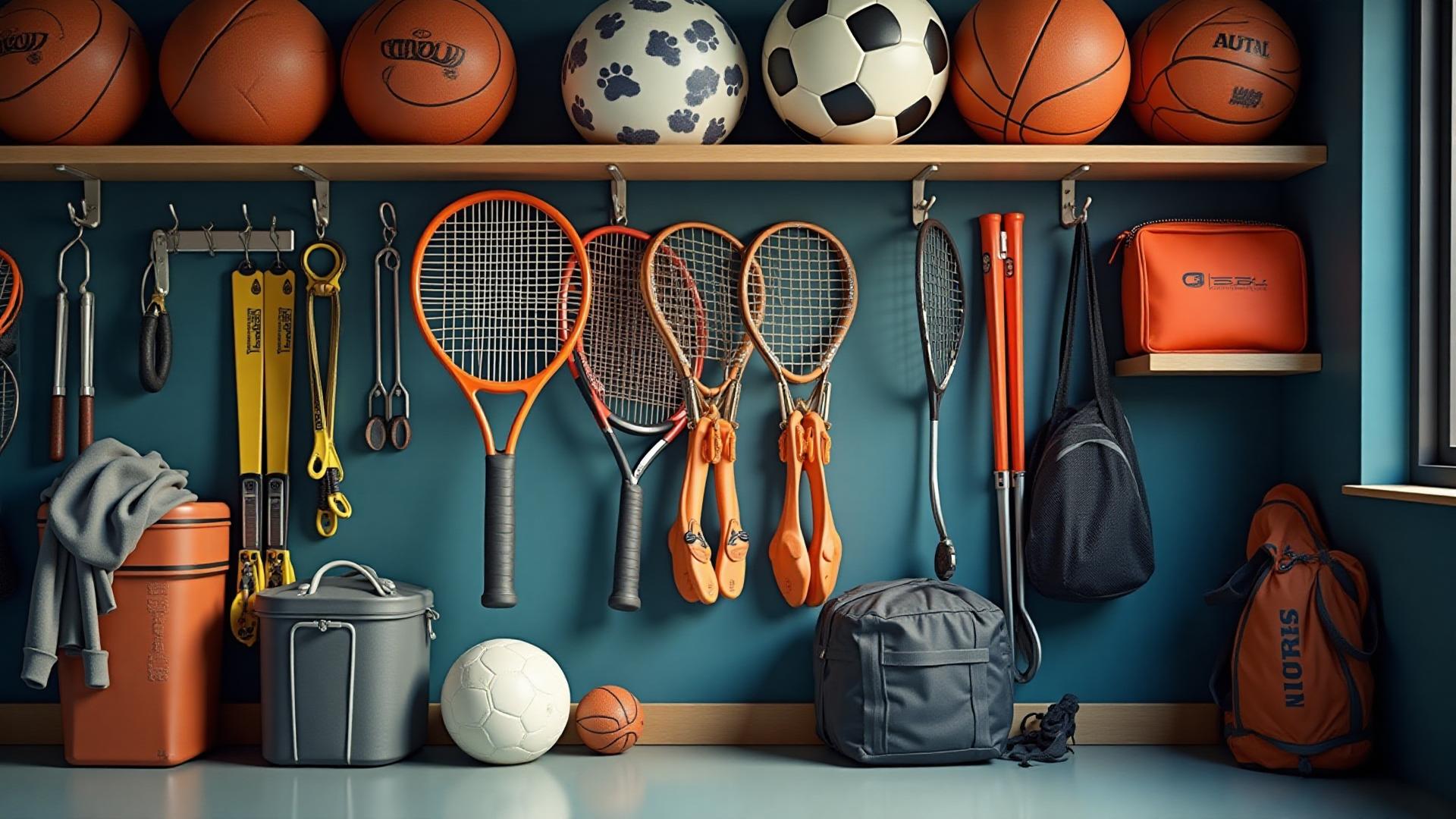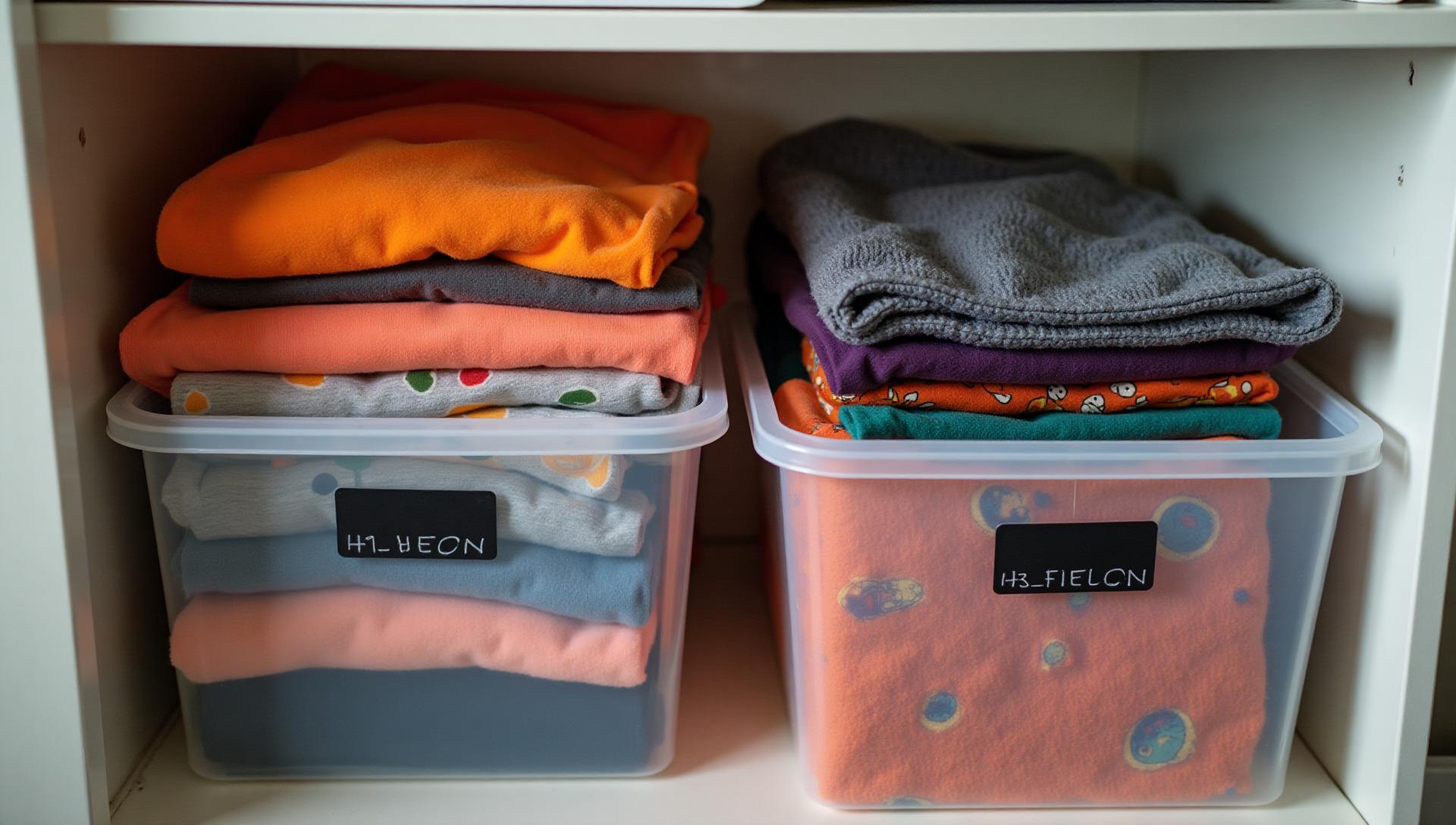
For the sports enthusiasts among us, our homes often become repositories for a diverse array of sporting equipment and gear. Keeping everything from soccer balls to skiing gear organized can be a formidable task, but with the right storage strategies, it's entirely achievable. We're here to guide you through some effective ways to store your sporting goods, ensuring they remain in perfect condition and are always ready for your next adventure.
The Importance of Proper Sporting Equipment Storage
Storing your sports equipment correctly is not just about organization; it's essential for maintaining the quality and safety of your gear. Sports equipment is an investment in your health and enjoyment, and proper care can significantly extend its life. Exposure to elements like moisture or extreme temperatures can cause your gear to deteriorate prematurely, and improperly stored equipment can even become a safety hazard. Imagine the consequences of using a damaged helmet or a faulty bike brake.
Moreover, well-maintained equipment ensures better performance, whether you're on the field, track, or court. Regular care and storage can save you from frequent replacements, which can be costly over time. Additionally, your sports gear often holds sentimental value, and preserving it in good condition is a tribute to the memories attached to it.
Declutter and Organize Your Sporting Gear
The first step in effective sports gear storage is a thorough declutter. Assess your collection and decide what you need to keep at hand and what can be stored away. Inspect each item for wear and tear; gear in poor condition might need repairing or replacing.
Make a detailed inventory of your equipment and categorize them based on usage frequency. This helps in planning your storage space more effectively. Sports gear you use regularly should be easily accessible, while seasonal or rarely used items can be stored in less accessible places.
Next, decide what to do with the gear you no longer need. If it's still in good shape, consider donating it to local sports clubs or schools. Selling is another viable option, especially for high-value items. For gear that's beyond its life, proper disposal is crucial.
Cleaning your equipment before storage is vital. Dirt, sweat, and grime can cause damage over time. Follow manufacturer guidelines for cleaning and maintenance to keep your gear in top shape.
Pro Tip: Specialty cleaning products can provide extra care for specific types of gear. Consult professionals for advice on maintaining unique or high-value items.
Categorizing Your Sporting Gear and Equipment
An organized storage system starts with effective categorization of your gear. Here are some methods to consider:
- Group by Sport: Organize your gear by the sport they are used for, such as basketball, golf, or cycling. This makes it easier to find all the equipment you need for a specific activity quickly.
- Seasonal Categorization: Some sports gear is used seasonally. Store winter sports gear like skiing and ice skating equipment separately from summer sports gear like beach volleyball sets.
- Size and Bulk: Store larger items like kayaks or bikes separately from smaller gear like gloves and goggles. Consider the spatial requirements of each item.
- Frequency of Use: Keep items you use regularly, like running shoes or yoga mats, in an easily accessible location. Store items used less frequently, like camping gear, in a more out-of-the-way spot.
- Family Members: If you have a family of athletes, categorizing gear by family member can help keep everyone's equipment organized and readily accessible.
Clearly label each category for easy identification. This can be especially helpful in shared storage spaces or family homes.
Packing and Protecting Your Gear
Once your sports equipment is organized, the next step is to pack and protect it for storage. Proper packing is crucial for maintaining your gear in good condition. Here are some tips:
- Choose the Right Containers: Select storage containers or bags that are suited to the type of gear you have. Fragile items need sturdy, protective containers, while general sports equipment may be stored in bins or bags.
- Climate Considerations: Some equipment, like leather gear or electronics, needs protection from extreme temperatures and humidity. Consider climate-controlled storage for these items.
- Protection from Damage: Use padding, bubble wrap, or other protective materials to safeguard delicate items during storage. This is especially important for electronics, glass, or other breakable components.
- Preventing Moisture and Pests: Moisture-absorbing products can protect against dampness in storage areas. Additionally, ensure your storage space is secure against pests that can damage your gear.
- Smart Stacking: When storing containers, be mindful of weight distribution. Place heavier items at the bottom and lighter ones on top to prevent damage.
- Valuables and Sentimental Items: Store valuable or sentimental sporting goods in a secure and separate location to minimize the risk of theft or damage.
- Regular Checks: Periodically inspect your stored gear to ensure it remains in good condition and address any issues promptly.
Choosing the Right Storage Solution
Selecting the right storage solution for your sports gear involves considering several factors:
- Available Space: Evaluate the space available for storage in your home. Measure the area and choose a storage solution that fits without overcrowding or overwhelming the space.
- Accessibility: Consider how often you need to access each piece of gear. Frequently used items should be stored in easily accessible places, while seasonal or rarely used gear can be stored in more remote areas.
- Security: For valuable or high-risk items, ensure your storage solution is secure. This might mean lockable storage areas or more robust containers.
- Budget Considerations: Storage solutions come at various price points. Set a budget that reflects your needs and prioritize accordingly.
Frequently Asked Questions
Here are some answers to common questions about storing sports equipment:
- Long-Term Storage for Bikes: If storing a bike long-term, clean it thoroughly and inflate the tires. Consider hanging it to prevent tire damage and cover it to protect against dust.
- Storing Wet Gear: Always allow wet gear, like swimming suits or wetsuits, to dry completely before storing to prevent mold and odor. Hang them in a well-ventilated area until fully dry.
- Helmet Care: Clean helmets with mild soap and water and store them in a cool, dry place. Avoid exposing them to direct sunlight or extreme temperatures.
- Caring for Leather Equipment: Condition leather gear periodically and store it in a climate-controlled environment to prevent cracking and drying.
At Juujbox, we are committed to providing you with the best storage solutions for your sporting equipment and gear. Our range of secure, climate-controlled storage options ensures that your sports gear stays in peak condition, ready for your next game or outdoor adventure. Trust Juujbox to take care of your equipment, so you can focus on what you love - staying active and enjoying your sports.



